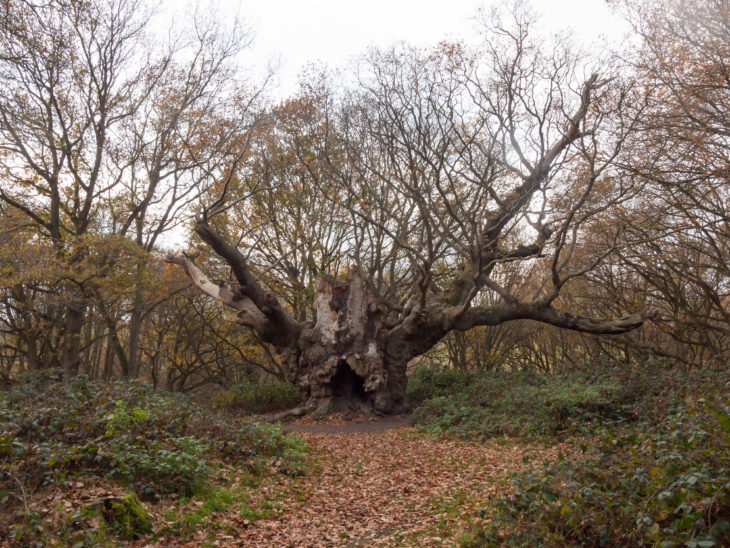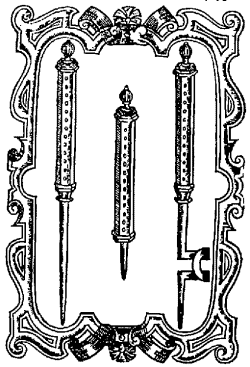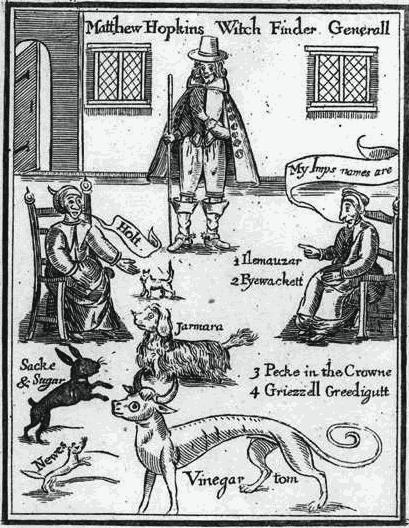The Legend of Old Knobbley, East Anglia's Spookiest Tree

In honour of the spookiest day of the year we thought we’d tell you about a local celebrity; one whose ghoulish history intertwines with one of the bloodiest periods in our history and who still stands as a silent reminder of East Anglia’s grisly past.
We are of course talking about Old Knobbley.
For those of you who don’t know him, Old Knobbley is a huge and ancient oak tree. His immense trunk is scarred and riven, testament to the long ages of his life. Through drought and flood, famine, freeze and thaw Old Knobbley has withstood the worst of the elements. For some 800 years he has stood in Furze Wood, just outside Mistley, but the years have not been kind. Every injury inflicted over the centuries has healed over as a bizarre, lumpy carbuncle (called a burr in the timber trade), giving him the pocked and gnarled appearance that led to his affectionate nickname.
His striking appearance, great size and age have meant that Old Knobbley is a local landmark. Being so recognisable he has long been a popular meeting place, but also somewhere to flee to… it was during the English Civil War that another of East Anglia’s most famous sons’ lives intersected with the great old oak’s and it is here that the macabre part of Old Knobbley’s story begins.
The Witch Finder General
As the self-styled Witch Finder General, Matthew Hopkins presented himself as a parliamentary official tasked by the government with hunting down witches across East Anglia. In reality he was nothing more than a huckster, taking advantage of the ignorance and superstition of rural communities and extorting huge fees from them to sniff out the “witches” that plagued them. He had no authority from the government or crown, but instead used the chaos of the Civil War to his advantage.
Well-educated, intelligent and ruthless enough to take advantage of the confusion and terror of this most divisive period of history, Hopkins made a pretty penny out of the untold misery and suffering of some 300 women who were summarily executed on his orders between 1644 and 1646. Historians now estimate that Hopkins and his assistant John Stearne were responsible for more than 60% of all the executions for witchcraft ever to take place in England, killing more in 14 months than in the rest of our recorded history.
So how do you find a witch?

It was widely believed at the time that witches would have a wart or pimple from which they suckled their familiar with their own blood. This “witch’s tit” (yes, seriously) was believed to be cold and unfeeling, so Hopkins employed 4 women as “prickers” to jab and cut at the accused’s tenderest parts to see if they hurt or bled. Naturally they used blunted knives.
Suspected witches could also be thrown in ponds to see if they drowned. If the water rejected them then clearly they had made an unholy compact with the devil, if they drowned… well, no harm done…
In terror of Hopkins and his bloodcurdling methods, local legend has it that suspected witches fled to the relative safety of the woods and the shelter of Old Knobbley’s branches. Some even go so far as to say that the ghosts of the witches, wrongly accused and horribly murdered, haunt Furze Wood still.
Old Knobbley isn’t the only such tree in the world, in fact a small number of all trees will develop the cankerous growths so prized by furniture makers and wood fans as burr. For a frighteningly good example of what a monstrous slab of burr oak can look like, you could always come and have a look in our slab gallery where we have a pair of enormous pieces for sale right now.
Blog | 6 years AGO
